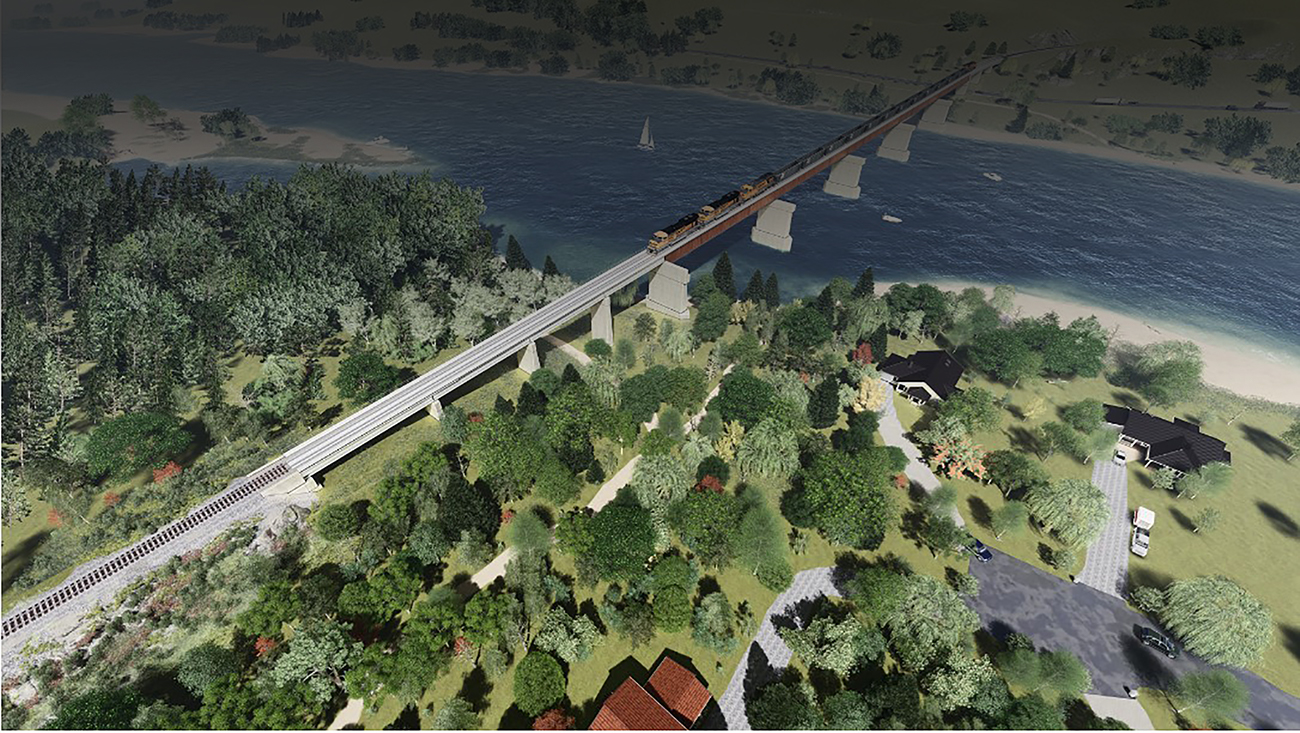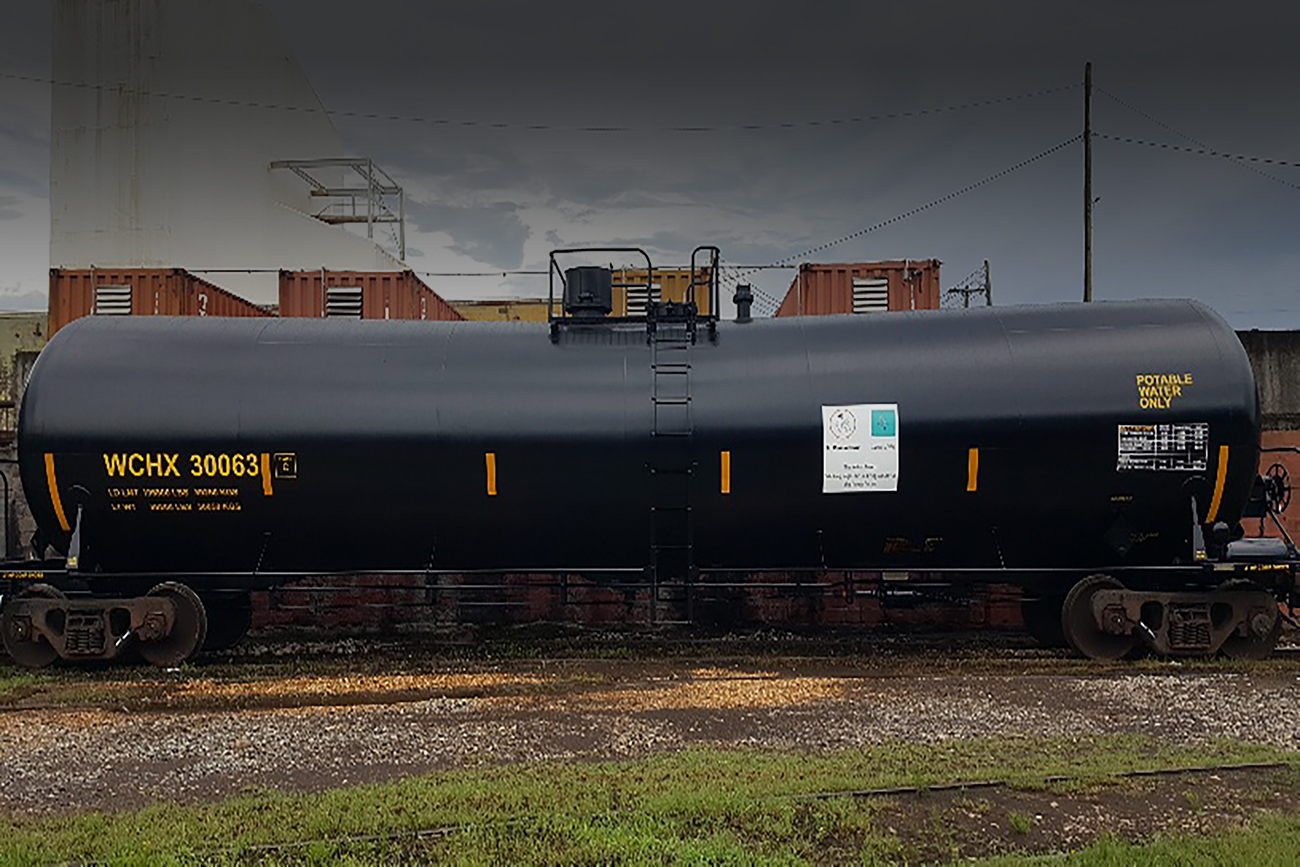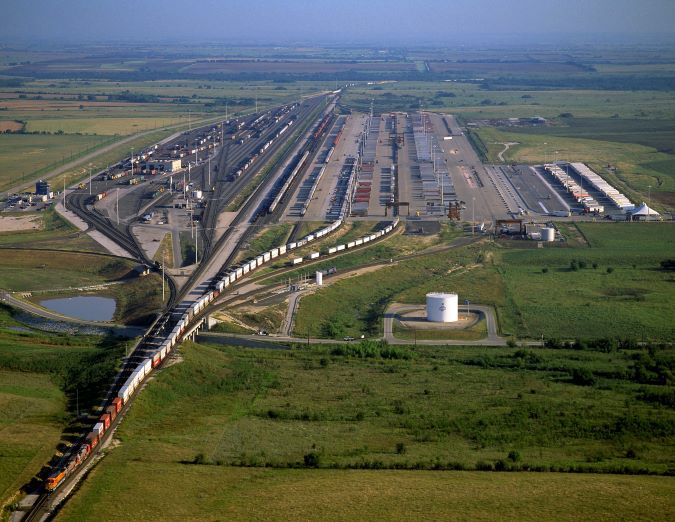
Alliance Intermodal Facility: Celebrating 30 years of growth
By SUSAN GREEN
Staff Writer
1994 was a pivotal year for the global supply chain as NAFTA, the North American Free Trade Agreement, took effect. It was also when Amazon was founded and the World Wide Web became easily accessible to the average person.
Meanwhile, in North Texas, the Alliance Intermodal Facility (Alliance for short) officially opened as part of a major development project on what was then 13,000 acres of farmland.
Today, the facility in Haslet, just north of Fort Worth, Texas, celebrates 30 years as part of the most modern railroad transportation center in the Southwest.
Intermodal was not new in 1994, but BNSF predecessor the Atchison, Topeka & Santa Fe Railway (Santa Fe) was more aggressive than many railroads at growing its intermodal business. It designed and built Alliance specifically for intermodal. One year later, Santa Fe and Burlington Northern Railroad merged to become BNSF.
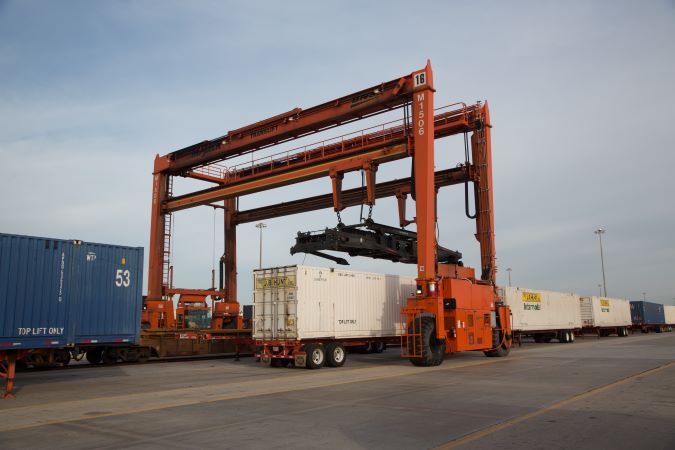
“Before Alliance, intermodal facilities were developed from former classification yards with sets of tracks removed and pavement added to accommodate trucks, cranes and trailer and container parking,” said Chuck Burriss, general director of hub operations. “At Alliance, the greenfield site allowed for a more efficient parking layout, increased track centers to provide double-sided production tracks, combined with 60-foot-span overhead cranes, you could load and unload to either side, all providing increased service capability, capacity and efficiency.”
That design would be repeated at future sites, in addition to the logistics park concept pioneered by BNSF, which are BNSF-owned intermodal hubs with surrounding large-scale warehouse development. BNSF opened Logistics Park Chicago in 2002 and Logistics Park Kansas City in 2013. Today, BNSF operates 27 intermodal facilities in 14 states and five logistics centers that serve customers with direct-rail service in multi-customer, multi-commodity business parks.
Thanks to its location, Alliance is a great connection point in and out of Mexico to Dallas/Fort Worth, Chicago and the Upper Midwest and beyond as well as the West Coast. (See map.) The busy hub operates 24/7 and handles all varieties of intermodal freight, including international (20-, 40- and 45-foot containers) and 53-foot domestic truckload, like UPS. Every week, about 50-60 outbound trains are built here.
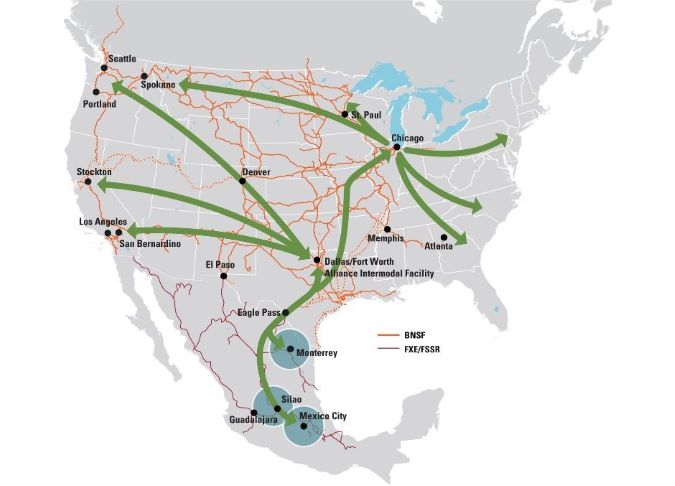
Alliance’s growth since opening has more than quadrupled. In 1994, the facility loaded and unloaded about 500 trailers and containers a day. Today, it averages about 2,700, with a daily lift record of 3,900. Alliance is one of two facilities on the BNSF network to have handled 1 million lifts in a year.
The facility’s footprint now covers about 500 acres, which includes nine production tracks, with four of those more than 8,000 feet long. Overall track length, including production and storage tracks, has increased by 350 percent. Parking has expanded from several hundred spots in 1994 to more than 8,500. There are also 24 cranes, up from 10 in 2010.
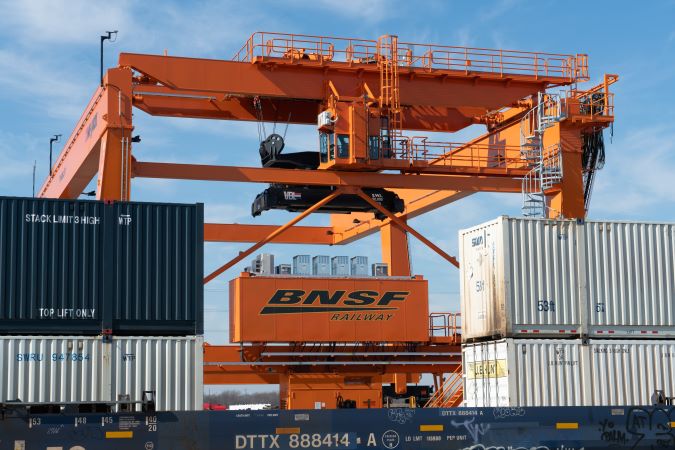
In addition to having 400 great people, Alliance employs some of the most advanced technologies, like drones for inventory and artificial intelligence (AI) to be more efficient. For example, an AI-based algorithm piloted here creates load plans for outbound trains in seconds, ensuring that the right containers and trailers are located where they need to be. With this algorithm, we’ve improved the time it takes to load a train on average by more than 30 minutes.
The expansions and technological advancements over the years have allowed Alliance to increase its lift capability, which enables additional service offerings to key markets. Last year, we added a lane between the Port of Houston and Alliance to serve the greater Dallas/Fort Worth market and another to Denver.
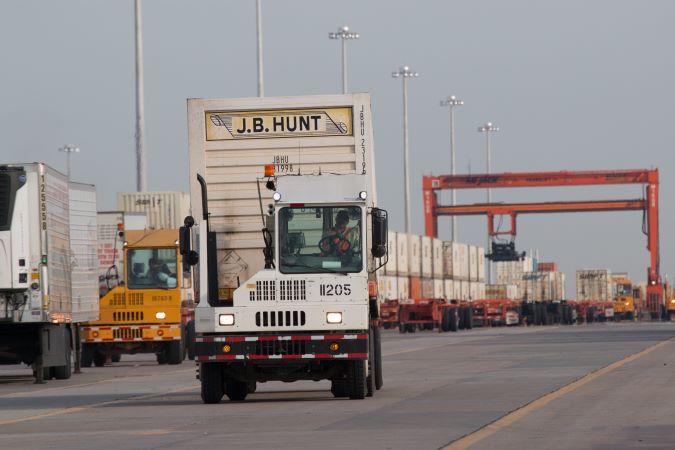
“We have a great, united team here with a high-performing history,” said Cale Johnson, general director of transportation for the Red River Division. “Congratulations to our dedicated team members who over the years have built on the success and reputation of this important facility.”
Thank you, Alliance, for 30 years of safely moving the nation’s intermodal freight!
